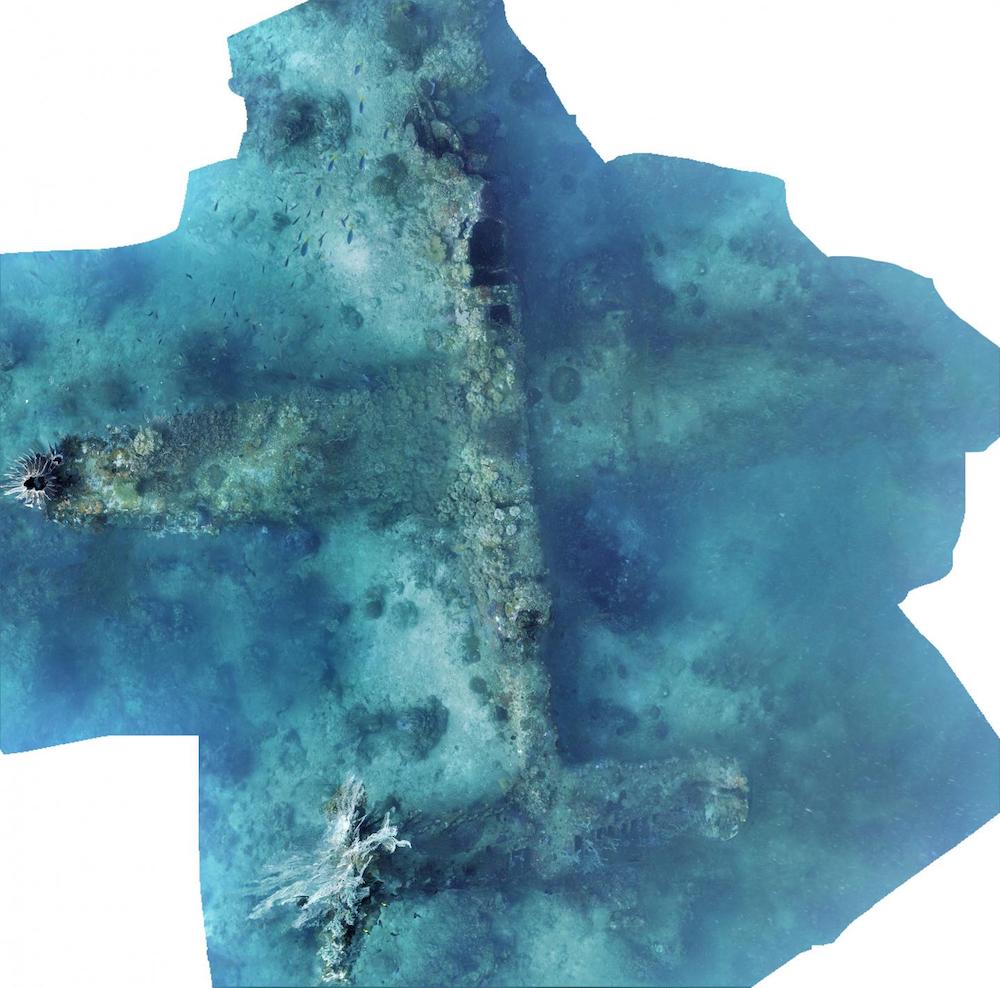2 Missing WWII B-25 Bombers Found in the Pacific Ocean
By documenting the wreckage of the B-25 and surveying the final resting place of another aircraft, the team hopes to help the U.S. Department of Defense repatriate the remains of American service members missing in action.
Historical records indicate that both planes were shot down amid fierce combat more than 70 years ago, the researchers said. One B-25 was carrying six crewmembers who have long been unaccounted for. The second bomber also had six crewmembers, five of whom survived and were taken prisoner by the Japanese, while one went down with the plane. [Photos: Underwater Robots Help Recover WWII Plane Wrecks]
Twin engine B-25 bombers were among the most versatile aircraft developed by the North American Aviation company during World War II. They quickly became standard equipment for all Allied forces, and the warbirds were used to conduct nearly 10,000 missions, from bombing enemies to photo reconnaissance, submarine patrols and the historic raid over Tokyo.
But the impact of hitting the ocean waves at a high speed mangled the planes, so researchers had to take a few extra steps to identify the aircraft remains.
"People have this mental image of an airplane resting intact on the sea floor, but the reality is that most planes were often already damaged before crashing, or broke up upon impact," Katy O'Connell, an oceanographer at the University of Delaware who is associated with the expedition, said in a statement. "And, after soaking in the sea for decades, they are often unrecognizable to the untrained eye, often covered in corals and other sea-life."
The researchers, who are part of a public-private collaboration called Project Recover, began their hunt for the planes by digging through the National Archives, old military photos and interviews with veterans and locals. Once they narrowed the location to a 3.8-square-mile area (10 square kilometers) in the Pacific Ocean, the scientists used scanning sonars, thermal cameras and freely swimming underwater robots to pinpoint the location of the B-25.

The discovery marked the sixth aircraft that Project Recover scientists have identified and documented since 2012.
Sign up for the Live Science daily newsletter now
Get the world’s most fascinating discoveries delivered straight to your inbox.
Some expeditions have also resulted in new leads. Local villagers and scuba divers are often aware of the locations of some planes, according to the researchers. But those sites, like the second B-25 plane the group surveyed in Madang Harbor, Papua New Guinea, have never been officially documented or searched for possible recovery missions.The discovery marked the sixth aircraft that Project Recover scientists have identified and documented since 2012.
Once Project Recover scientists have gathered detailed information on a site, they turn the data over to the Pentagon's Defense POW/MIA Accounting Agency, which is tasked with repatriation efforts and contacting surviving relatives.
"There are still over 73,000 U.S. service members unaccounted for from World War II, leaving families with unanswered questions about their loved ones," O'Connell said. "We hope that our global efforts can help to bring closure and honor the service of the fallen."
Original article on Live Science.
p.p1 {margin: 0.0px 0.0px 0.0px 0.0px; font: 11.0px Calibri} span.s1 {font-kerning: none}









